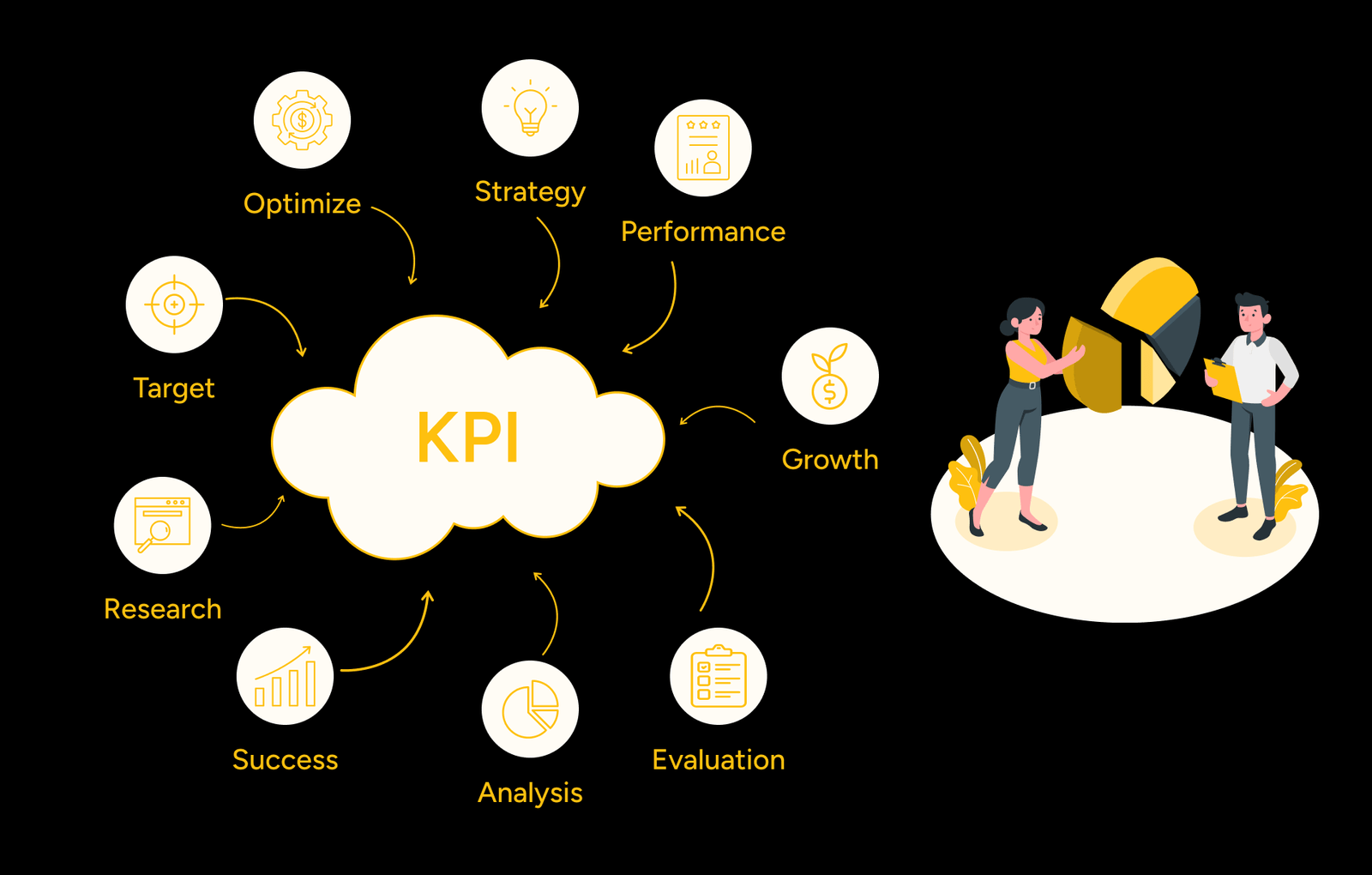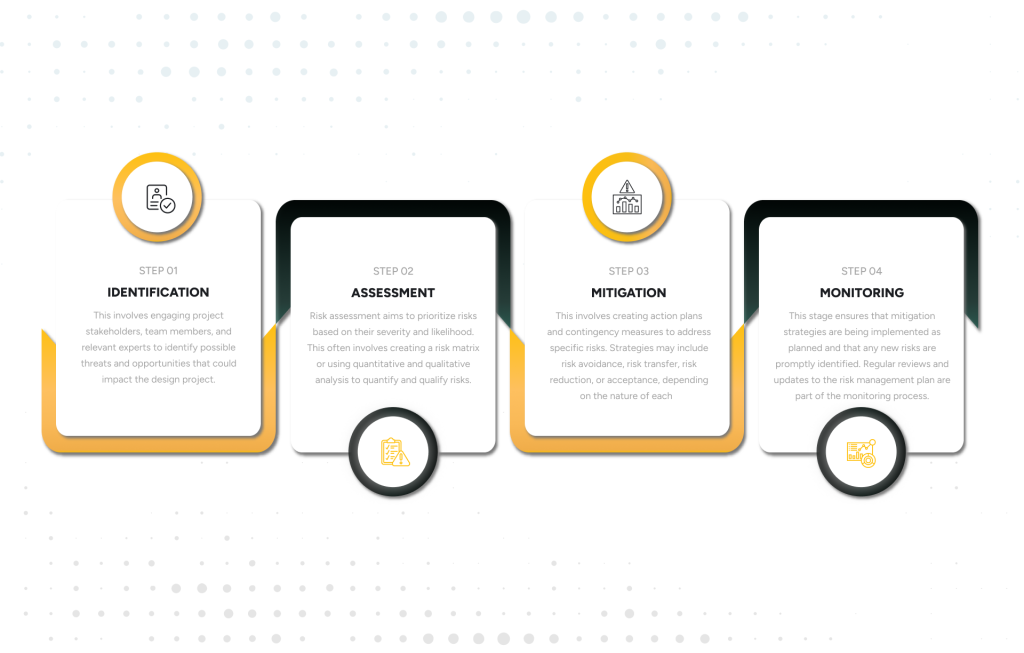Human Resources (HR) is the backbone of any thriving organization. It’s not just about hiring and payroll; it’s about shaping a workplace where people thrive and the company flourishes.

But how do we measure the success of HR efforts?
How can we tell if our HR goals are being met?
Assessing HR goals involves looking at specific metrics or key performance indicators (KPIs) that reflect the health of various HR initiatives. By leveraging key performance indicators (KPIs) and relevant metrics, HR professionals can gauge their progress, align initiatives with broader organizational goals, and make informed decisions to drive continuous improvement.
The Evolution of HR Metrics
Traditionally, HR success was measured primarily through basic metrics like employee turnover rates, time to hire, and training hours. While these metrics remain fundamental, the evolving nature of work and the increasing focus on employee experience have led to a more comprehensive approach to evaluating HR performance.
Aligning HR Goals with Organizational Objectives
The first step in evaluating HR goals involves aligning them with the overarching objectives of the organization. Understanding the company’s strategic direction enables HR teams to develop initiatives that directly contribute to achieving these goals. For instance, if the organization aims to enhance innovation, HR might focus on fostering a culture of creativity and investing in professional development programs.
Here are some simple yet effective metrics to gauge the effectiveness of HR efforts:
Employee Turnover Rate: Employee turnover rate stands as a pivotal metric in deciphering the pulse of any organization. It embodies the percentage of employees departing from a company within a defined timeframe. This metric doesn’t merely signify the movement of staff; it unveils critical insights into the organizational health, culture, and employee satisfaction levels.
This metric measures the percentage of employees leaving the company within a certain period.
A high turnover rate can set off warning signals within an organization. It hints at potential underlying issues such as dissatisfaction, ineffective management practices, cultural misalignment, or lack of growth opportunities. Conversely, a lower turnover rate often aligns with a content and stable workforce, indicating a positive work environment and fulfilling employee experiences.
Root Causes of High Turnover:
Job Dissatisfaction: Employees might seek alternative opportunities due to dissatisfaction with job roles, responsibilities, or a lack of recognition and appreciation.
Leadership and Management: Poor management practices, ineffective leadership, or communication breakdowns can drive talented employees away.
Cultural Misfit: Incompatible organizational culture or values with employees’ personal beliefs and values often result in voluntary departures.
Career Growth and Development: A dearth of growth opportunities, training, or career development programs can prompt employees to seek advancement elsewhere.
High turnover rates pose multifaceted challenges for organizations. It not only incurs significant financial costs associated with the recruitment, onboarding, and training of new hires but also affects team dynamics, productivity, and morale. Moreover, it can tarnish the company’s reputation as a preferred employer within the industry.
Strategies for Mitigating High Turnover:
Employee Feedback Mechanisms: Regular feedback loops and surveys can help identify pain points and areas needing improvement within the organization.
Enhanced Employee Experience: Prioritizing a positive work environment, recognition programs, work-life balance, and opportunities for growth and development can significantly reduce turnover.
Effective Leadership Development: Investing in leadership training and nurturing effective managers can boost employee satisfaction and retention.
Culture and Values Alignment: Fostering an inclusive and diverse culture where employees feel valued and aligned with the company’s values is crucial.
Continuous Improvement: Constantly reassessing HR policies and practices to meet evolving employee needs can significantly impact retention rates.
Measuring and analyzing turnover rates over specific periods provides insights essential for informed decision-making. It allows HR teams to identify trends, understand the reasons behind departures, and implement targeted strategies to retain talent.
Employee turnover rate serves as more than a statistical figure; it’s a reflection of an organization’s inner workings and employee satisfaction levels. By understanding and leveraging this metric, companies can proactively address challenges, enhance workplace satisfaction, and fortify their position as employers of choice.
Time-to-Fill:
In the realm of Human Resources, the duration it takes to fill vacant positions plays a pivotal role in determining the efficiency and effectiveness of a company’s recruitment process. Known as “time-to-fill,” this metric measures the period from the initial job posting to the eventual onboarding of a new employee. Understanding and optimizing this timeline is crucial for maintaining productivity, preserving team dynamics, and ensuring a competitive edge in talent acquisition.
Impact on Organizational Dynamics:
Productivity and Workload: Vacant positions often lead to increased workload on existing employees, affecting productivity and potentially leading to burnout.
Team Dynamics and Morale: A prolonged hiring process can disrupt team dynamics, causing uncertainty and affecting morale, especially when teams are understaffed.
Competitive Edge in Talent Acquisition: In a competitive market, a lengthy hiring process may result in losing top-tier candidates to more agile organizations.
Identifying Causes of Delays:
Several factors can contribute to a prolonged time-to-fill:
Inefficient Processes: Complex or convoluted recruitment processes can delay decision-making and prolong the hiring timeline.
Lack of Clarity in Job Requirements: Unclear job descriptions or requirements can lengthen the time it takes to identify suitable candidates.
Lengthy Screening and Interview Processes: Excessive rounds of interviews or bureaucratic hurdles can elongate the hiring cycle.
Strategies to Optimize Time-to-Fill:
Streamlined Recruitment Processes: Simplifying and optimizing recruitment workflows can significantly reduce time-to-fill.
Clear Job Descriptions: Precise and detailed job descriptions help attract relevant candidates, expediting the selection process.
Efficient Candidate Screening: Implementing efficient screening methods and using technology for initial assessments can shorten the selection phase.
Collaboration and Communication: Ensuring effective communication between HR, hiring managers, and other stakeholders expedites decision-making.
Tracking and analyzing time-to-fill metrics provide valuable insights into the efficiency of the recruitment process. It allows HR teams to identify bottlenecks, refine strategies, and make informed decisions to enhance the overall recruitment experience.
Employee Satisfaction and Engagement:
In the intricate tapestry of organizational success, employee satisfaction and engagement stand as cornerstones shaping a company’s culture, productivity, and overall prosperity. Understanding and measuring this crucial metric provides insights into the heartbeat of an organization, reflecting contentment, motivation, and commitment levels among employees.
Employee satisfaction embodies the contentment and happiness levels employees experience within their roles and the organization as a whole. On the other hand, employee engagement represents the emotional commitment employees have towards their work, manifested through dedication, enthusiasm, and willingness to go the extra mile.
Significance of Employee Satisfaction and Engagement:
Productivity and Performance: Satisfied and engaged employees often exhibit higher levels of productivity, contributing significantly to the company’s success.
Creativity and Innovation: A positive work environment nurtures creativity and innovation, fostering fresh ideas and solutions from engaged employees.
Retention and Loyalty: Content and engaged employees are more likely to stay with the organization, reducing turnover rates and enhancing institutional knowledge.
Customer Satisfaction: Happy and engaged employees tend to provide better customer service, positively impacting customer satisfaction and loyalty.
Measuring Employee Satisfaction and Engagement:
Surveys and Feedback Mechanisms: Regular surveys and feedback platforms provide a direct channel for employees to voice their opinions, allowing organizations to gauge satisfaction levels.
Employee Net Promoter Score (eNPS): eNPS measures employees’ willingness to recommend their workplace, indicating their satisfaction and engagement.
Attendance and Participation: High attendance rates and active participation in company events or initiatives often correlate with employee satisfaction.
Performance Reviews and Feedback: Evaluating performance reviews and collecting feedback sessions can uncover insights into employee engagement levels.
Strategies to Boost Satisfaction and Engagement:
Open Communication: Encouraging transparent communication channels fosters a sense of belonging and trust within the organization.
Recognition and Appreciation: Acknowledging and appreciating employee contributions significantly impacts their satisfaction and engagement.
Professional Development: Providing opportunities for growth and development demonstrates the organization’s investment in employees’ careers.
Work-Life Balance: Promoting a healthy work-life balance supports employee well-being and overall satisfaction.
Analyzing satisfaction and engagement metrics equips HR teams and organizational leaders with valuable insights. It allows them to identify areas for improvement, tailor strategies to enhance workplace culture, and cultivate an environment where employees feel valued, motivated, and engaged.
Training and Development Participation:
In the ever-evolving landscape of modern workplaces, the cultivation of skills and knowledge among employees stands as a cornerstone for organizational growth and adaptability. The extent of employee participation in training and development programs serves as a key metric reflecting not just the workforce’s eagerness to improve but also the effectiveness of HR initiatives in providing valuable learning opportunities.
Employee participation in training and development initiatives holds multifaceted significance:
Skill Enhancement: Engaged participation in training programs signifies a proactive approach towards enhancing skills and knowledge, aligning individuals with evolving industry demands.
Professional Growth: Actively participating in learning opportunities signals an employee’s investment in their growth, contributing to personal and professional development.
Organizational Adaptability: A workforce engaged in continuous learning remains more adaptable to change, driving innovation and agility within the organization.
Effectiveness of HR Initiatives: The level of participation reflects the success and appeal of HR’s efforts in designing and offering learning opportunities that resonate with employees.
Tracking Participation Metrics:
Attendance Rates: Monitoring the number of employees attending training sessions provides a tangible metric for participation.
Course Completion Rates: Measuring the percentage of employees completing training courses offers insights into the level of commitment to learning initiatives.
Feedback and Engagement: Gathering feedback on training sessions and observing employee engagement during these programs reflects their perceived value and effectiveness.
Post-Training Application: Assessing how newly acquired skills or knowledge are applied in day-to-day tasks indicates the practical impact of training initiatives.
Benefits of High Participation:
Enhanced Skill Sets: Active participation results in a workforce equipped with up-to-date skills, vital for improved job performance.
Employee Engagement and Retention: Offering learning opportunities demonstrates the organization’s investment in employees’ growth, positively impacting engagement and retention.
Innovation and Adaptability: A culture of continuous learning fosters innovation, encouraging employees to embrace new ideas and approaches.
Organizational Success: A well-trained workforce directly contributes to organizational success, staying competitive in a rapidly changing business landscape.
Strategies to Encourage Participation:
Relevance and Variety: Offer diverse training options relevant to employees’ roles and interests, catering to various learning preferences.
Recognition and Incentives: Recognize and reward employees for their participation and achievements in training programs.
Accessibility and Flexibility: Ensure training opportunities are easily accessible and accommodate employees’ schedules.
Leadership Support: Encourage leadership to actively participate in and endorse learning initiatives, setting an example for the rest of the workforce.
Performance Reviews and Goal Attainment:
Performance reviews encapsulate a structured assessment of an employee’s work performance, behaviours, achievements, and areas for improvement. Simultaneously, goal attainment reflects the extent to which employees meet the predefined objectives set in alignment with the organization’s broader goals and vision.
Significance of Performance Reviews and Goal Attainment:
Alignment with Organizational Objectives: Regular evaluations offer a glimpse into how well employees’ efforts align with the overarching goals of the company.
Individual and Team Performance: Performance reviews highlight individual strengths, weaknesses, and contributions while goal attainment reflects collective achievements.
Identification of Development Areas: Evaluations provide a platform to identify areas for improvement, fostering professional growth and skill enhancement.
Effectiveness of HR Strategies: High performance and goal attainment are indicative of the effectiveness of HR initiatives in setting clear objectives and fostering a conducive work environment.
Components of Effective Performance Evaluations:
Clear Objectives and Criteria: Establishing clear performance criteria aligned with organizational goals ensures a fair and consistent evaluation process.
Regular Feedback Loops: Continuous feedback loops throughout the year facilitate ongoing performance improvement rather than relying solely on annual reviews.
Two-Way Communication: Encouraging open dialogue during evaluations fosters understanding, engagement, and accountability.
Goal Setting and Tracking: Setting SMART (Specific, Measurable, Achievable, Relevant, Time-Bound) goals and tracking progress allows for effective goal attainment assessment.
Leveraging Performance Metrics for Improvement:
Identifying Strengths and Weaknesses: Performance evaluations highlight areas of excellence and areas needing improvement, aiding in professional development plans.
Rewarding and Recognizing Achievement: Recognizing high performers and achievements fosters motivation and encourages sustained excellence.
Training and Support Initiatives: Tailoring training programs and support based on performance evaluations helps address skill gaps and enhance capabilities.
Strategic Decision-Making: Using insights from performance evaluations to make informed decisions regarding promotions, role placements, and resource allocation.
Diversity and Inclusion Metrics:
Diversity metrics encompass quantifiable data related to the variety of backgrounds, experiences, and perspectives present within an organization. These metrics span multiple facets, including gender, ethnicity, age, sexual orientation, abilities, and more. The inclusion aspect pertains to creating an environment where diverse voices are heard, respected, and integrated into the fabric of the organization’s culture.
Significance of Diversity and Inclusion Metrics:
Representation and Fairness: Tracking diversity metrics offers insights into the organization’s commitment to ensuring fair and equitable representation across all demographics.
Innovation and Creativity: Diverse teams often bring varied perspectives and ideas, fostering innovation and driving creative solutions to challenges.
Employee Engagement and Retention: An inclusive workplace culture promotes higher employee engagement and retention rates by creating an environment where individuals feel valued and respected.
Brand Reputation and Market Competitiveness: Demonstrating a commitment to diversity and inclusion enhances an organization’s brand reputation and attractiveness as an employer in the market.
Components of Effective Diversity Metrics:
Hiring and Promotion Rates: Tracking the demographic breakdown of new hires and promotions helps assess the inclusivity of recruitment and advancement processes.
Retention and Turnover Rates: Monitoring retention rates across diverse groups provides insights into the workplace’s inclusiveness and employees’ sense of belonging.
Representation in Leadership: Assessing diversity in leadership positions reflects the organization’s commitment to diverse talent development and progression.
Employee Feedback and Surveys: Gathering feedback on workplace experiences from diverse groups helps understand their perceptions and challenges.
Leveraging Diversity Metrics for Inclusive Excellence:
Setting Clear Objectives: Establishing specific diversity goals aligned with broader organizational values and objectives creates a roadmap for progress.
Training and Education: Implementing diversity and inclusion training programs ensures awareness and understanding across the organization.
Diverse Recruitment Strategies: Implementing inclusive recruitment strategies that attract a diverse pool of candidates fosters a culture of diversity from the onset.
Inclusive Policies and Practices: Developing and implementing inclusive policies and practices ensures fairness and equity in all aspects of employment.
Cost-Per-Hire and ROI on HR Initiatives:
Calculating the cost incurred per new hire and measuring the return on investment (ROI) for various HR programs serve as vital metrics, offering insights into the efficiency and impact of HR initiatives.
Understanding Cost-Per-Hire and ROI:
Cost-Per-Hire: This metric calculates the total expenditure incurred in the recruitment process per new hire, encompassing expenses related to advertising, agency fees, recruiter salaries, technology, and other recruitment-related costs.
Return on Investment (ROI): ROI measures the gains or benefits realized from HR programs or initiatives relative to the costs invested. It helps assess the effectiveness and efficiency of these initiatives in achieving organizational objectives.
Significance of Cost-Per-Hire and ROI Metrics:
Efficiency Assessment: Cost-per-hire metrics offer insights into the efficiency of the recruitment process, highlighting areas where costs can be optimized or reduced.
Resource Allocation: Understanding the ROI of HR programs aids in strategic resource allocation, directing investments towards initiatives that yield the highest returns.
Decision-Making Support: Data-driven insights from these metrics assist HR leaders in making informed decisions regarding recruitment strategies and the implementation of various HR programs.
Components of Effective Measurement:
Comprehensive Cost Analysis: Conducting a thorough analysis to include direct and indirect costs associated with the recruitment process.
Defining Measurable Objectives: Clearly defining and aligning HR initiatives with specific, measurable objectives allows for accurate ROI calculations.
Data Collection and Analysis: Utilizing robust data collection methods and analytical tools to accurately track and assess costs and outcomes.
Long-Term Evaluation: Continuous evaluation of both short-term and long-term impact to measure ROI over time and identify trends.
Leveraging Cost-Per-Hire and ROI for Strategic Impact:
Optimizing Recruitment Processes: Insights from cost-per-hire metrics can drive efficiencies in recruitment, reducing unnecessary expenses and enhancing hiring practices.
Maximizing HR Investments: ROI calculations guide HR leaders in optimizing budget allocation, focusing on initiatives that yield the highest returns.
Demonstrating Value: Communicating the ROI of HR initiatives effectively showcases the value HR brings to the organization’s overall success.
Continuous Improvement: Using these metrics as a feedback loop fosters a culture of continuous improvement, allowing HR strategies to evolve and adapt.
Cost-per-hire and ROI metrics aren’t just numbers on a balance sheet; they symbolize HR’s commitment to efficiency, effectiveness, and strategic impact. By leveraging these metrics effectively, HR professionals align their efforts with organizational goals, driving growth and success.
A final word:
In today’s competitive business landscape, HR departments serve as strategic partners in achieving organizational success. By leveraging a mix of quantitative and qualitative metrics, HR professionals can effectively assess their performance, demonstrate the value they bring to the organization, and steer initiatives that foster a motivated, engaged, and high-performing workforce. Regularly analyzing these metrics helps HR departments adjust strategies, improve processes, and demonstrate their value to the organization. It’s an ongoing cycle of setting goals, measuring progress, and refining approaches to ensure that HR efforts align with the company’s vision and contribute to its success.
Ultimately, the successful evaluation of HR goals isn’t just about hitting specific numbers but about creating an environment where employees thrive, aligning HR strategies with business objectives, and nurturing a culture of continuous improvement.

